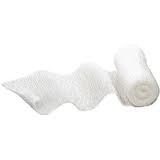Mepitel for Open Sores With Little or No Drainage
Jump to:
What is Mepitel?
Mepitel is a soft, flexible silicone dressing used to cover open wounds. It does not absorb drainage and does not stick to the wound. This makes the dressing change less painful.What is it used for?
Mepitel has holes that let drainage pass onto an outer absorbent dressing. This outer dressing must be changed as directed to keep the wound from getting infected.
Instructions for use
- Wash hands with soap and water. Dry with a clean towel.
- Clean the wound as you were told by the doctor or nurse. Dry the skin around the wound.
- Cut the Mepitel to the correct size. Mepitel should overlap the dry skin around the wound by at least one inch.
- Take the plastic off of both sides of the Mepitel.
- Put the Mepitel on the wound. Smooth the Mepitel onto the skin around the wound. This will help prevent the Mepitel from sliding off the wound.
- If using a topical antibiotic or gel, it can be put on top of, or under the Mepitel.
- Put a second dressing like rolled gauze on top of Mepitel. Your child’s doctor or nurse will tell you what to use. Use extra padding to hold Mepitel in place for a deep wound or in areas that move.
-
 Mepitel can be used under Ace® bandages, Tubigrip® and compression garments. Use medical tape as directed to hold it in place.
Mepitel can be used under Ace® bandages, Tubigrip® and compression garments. Use medical tape as directed to hold it in place.
How often does it need to be changed?
Mepitel may be left in place for several days depending on the wound. Drainage needs to pass freely through the dressing, and the pores should not be blocked. If the outer dressing becomes wet or dirty, it should be changed with the Mepitel left in place. Mepitel is a single-use dressing.
For more health and wellness information check out this resource: https://kidshealth.org/ChildrensWi/en/parents



